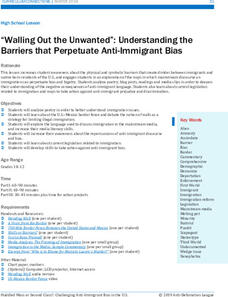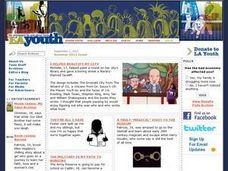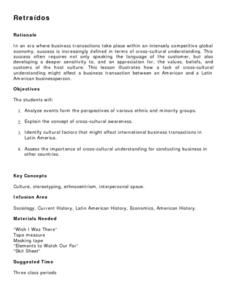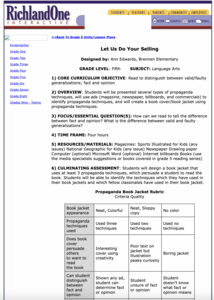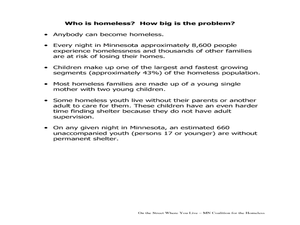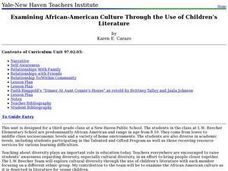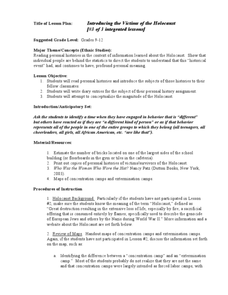Curated OER
Interpreting Perspective
Work on characterization with a narrative writing activity, in which middle schoolers interpret a character's perspective. They discuss family traditions and examine how culture can influence a character's perspective. Next, they read...
Media Smarts
First Person
High schoolers explore the relationship between video games and actual population. Example: A 2005 study showed Latino youth play at higher rates than other groups, but there are no Latino playable characters. They watch a brief video...
Teaching Tolerance
Introducing 'The New Jim Crow'
When Jim Crow Laws ended, the intent behind them did not. Academics read "The New Jim Crow Laws" and an interview from the author to understand how racism has not ended, but rather changed over time. The lesson explains how prejudices in...
Teaching Tolerance
Understanding the Prison Label
Break the chain. An engaging lesson plan examines why it is so hard to break free of the prison system in the US. Academics participate in a reader's theater, read primary sources, and discuss their thoughts. The lesson plan explains the...
Anti-Defamation League
“Walling Out the Unwanted”: Understanding the Barriers that Perpetuate Anti-Immigrant Bias
As part of a study of immigrant bias, high schoolers investigate the language used in blogs, readings, media reports, and current legislation whose language perpetuates xenophobia. They then consider ways they can get involved in...
Curated OER
Who Serves Time? Breaking Down Stereotypes About Juvenile Offenders
Students read and discuss article "Doing Time," explore juvenile justice system and juvenile hall, and discuss stereotypes of young offenders.
Curated OER
Stereotypes About Homelessness
Students re-evaluate their own views of homelessness. They discuss their views on the homeless, examine where their ideas come from, and compare their views with what others have said. They write about "iam," a homeless man they study.
Curated OER
Counteracting Media Stereotyping
Discuss media stereotypes with your emerging consumers. They view a television program to identify gender bias. After discussing the clip as a class, each learner writes a story showing more equitable roles. Or consider having them...
Curated OER
Fairy Tales
Students listen as the teacher reads fairy tales to students and identify patterns. They listen as the teacher re-reads the fairy tales and signal or recite patterns as they listen. Students identify patterns in the fairy tales. They...
Curated OER
Retraidos
Learners discuss the statement "You can buy in any language, you sell in the language of the customer." Students watch a demonstration of personal space and discuss the different distances that various cultures assign as appropriate...
Curated OER
Americans
Students explore what it means to be an "American" in the eyes of people from other cultures. In this geography and cultural lesson, students discuss values that they have. Students read about behaviors that other cultures have noticed...
Teaching for Change
Latino/Hispanic Heritage Resource Packet
Here's a must-have resource for Latino/Hispanic heritage month, September 15 through October 15. The 18-page packet includes suggestions to guide your planning, quizzes to test knowledge of heritage facts and immigration myths, and...
Curated OER
Let Us Do Your Selling
Sixth graders analyze several types of propaganda techniques and create a book cover using the techniques. In this propaganda techniques activity, 6th graders analyze the propaganda techniques used in various ads. Students analyze the...
Curated OER
Investigating Our Multicultural World
Students compare and contrast a perceived view of life in Australia with the reality. In groups, they identify examples of stereotypes and how they can lead to misconceptions about a group of people. In groups, they complete a...
Curated OER
Diversity - Grade 8
Eighth graders consider the diversity of the First Nations cultures in Canada. In this cultural diversity lesson, 8th graders research the cultural groups of the First Nations as well as their contributions to Canadian society. Students...
Curated OER
Needs of the Homeless
Students explore the needs of the homeless. In this philanthropy lesson plan student read chapter 1 of Trevor's Place and discuss facts regarding homelessness. Students write their impressions about homelessness in journals.
Curated OER
Diversity - Grade 7
Seventh graders consider the diversity of the First Nations cultures in Canada. In this cultural diversity lesson, 7th graders research the cultural groups of the First Nations as well as their contributions to Canadian society. Students...
Curated OER
Children's Literature and African American Culture
Third graders examine various stories and poems and identify characteristics that make each individual unique. After analyzing the readings, they create their own personality poems to accompany self-portrait drawings. The poems and...
Curated OER
Introducing the Victims of the Holocaust
Students consider the plight of Holocaust victims. In this World War II lesson, students discuss the number of Jews who were persecuted during the war and read biographies by Holocaust survivors. Students compose essays on personal...
Curated OER
We Are One World
Students examine discrimination, prejudice, and bias in the world. In this tolerance lesson, students research examples of prejudice in different countries. They then identify the Core Democratic Values in song lyrics. Students locate on...
Curated OER
Learning to Summarize a Story
Students with hearing loss read independently and understand what is being read to them. For this independent reading lesson plan, students sequence and discuss the book that is read.
Albert Shanker Institute
Economic Causes of the March on Washington
Money can't buy happiness, but it can put food on the table and pay the bills. The first of a five-lesson plan unit teaches pupils about the unemployment rate in 1963 and its relationship with the March on Washington. They learn how to...
Curated OER
"Reading" Political Cartoons"
Students recognize visual sterotyping in political cartoons and to analyze its use. They speculate as to why political cartoons are so effective. The teacher explains that cartoonists often make use of stereotypes as visual symbols or...
Curated OER
READING COMPREHENSION: KRISTALLNACHT
Eighth graders explore the persecution of the Jews during Hitler's leadership of Germany in 1938.




